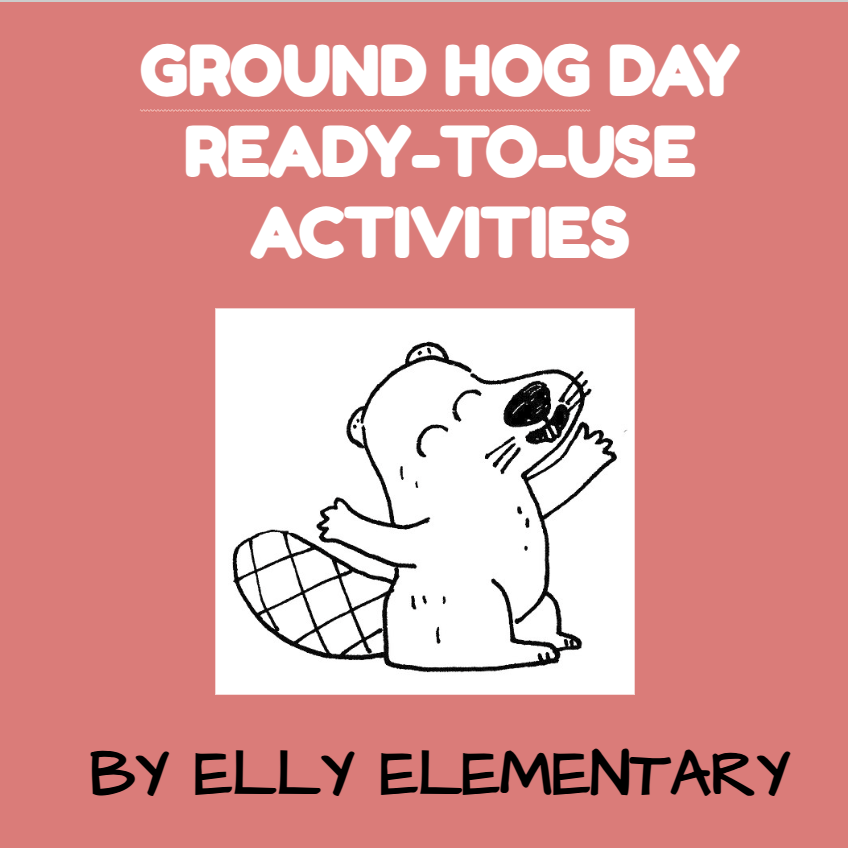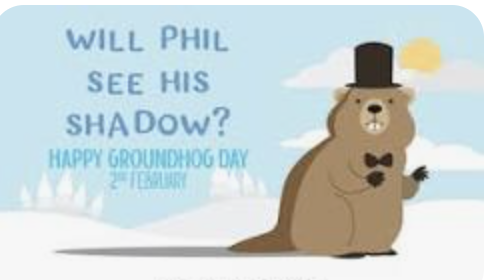We have all been facing a more than brutal winter this year that we haven't seen in years. Places that haven't had snow have been hit hard - parts of Ireland got hit with a foot of snow and places in the southern part of North Caolina got the first snowstorm in 30 years. So are we thinking about Groundhog Day?! I know I am and I am praying he makes a good call.
People look forward to Groundhog Day because it’s a fun tradition that adds excitement during the winter! Here’s why it’s special:
- Weather Prediction: On February 2nd, everyone waits to see if the groundhog will "predict" the weather:
- If the groundhog sees its shadow (sunny day), it means six more weeks of winter.
- If it doesn’t see its shadow (cloudy day), it means spring will come early.
- A Break from Winter: Groundhog Day happens in the middle of winter, and it’s a fun way to dream about warmer weather.
- Community Celebrations: Many towns, especially Punxsutawney, Pennsylvania, hold festivals, parades, and events to celebrate the day.
- Family Fun: It’s a great day for storytelling, crafts, and activities with kids, making it exciting for families and schools.
Even though it’s just a legend and not real science, Groundhog Day brings joy and keeps a lighthearted tradition alive!
What is a Groundhog?
A groundhog is a furry animal also called a woodchuck. It is a type of rodent, like squirrels, and belongs to the marmot family. Here are some fun and simple facts about groundhogs:
- Size: Groundhogs are about the size of a big rabbit, usually 16 to 20 inches long.
- Where They Live: Groundhogs live in North America, often in fields, forests, and near grassy areas.
- What They Eat: Groundhogs love to eat plants! They munch on grass, fruits, vegetables, and flowers.
- Dens: They are great diggers and make burrows in the ground to live in. Their burrows have "rooms" for sleeping and even a special place for storing food.
- Hibernation: Groundhogs sleep all winter! They hibernate in their burrows and wake up in the spring.
Groundhogs are especially famous because of Groundhog Day, when people use them to "predict" the weather.

What is Groundhog Day?
Groundhog Day is a tradition celebrated on February 2nd in the United States and Canada. According to folklore, a groundhog (a small burrowing animal) comes out of its burrow on this day. If the groundhog sees its shadow because it's sunny, it’s believed there will be six more weeks of winter. If it doesn’t see its shadow because it’s cloudy, it means spring will arrive early.
The day is both a weather prediction tradition and a fun cultural event, with the most famous celebration taking place in Punxsutawney, Pennsylvania, featuring the groundhog named Punxsutawney Phil. It's also seen as a lighthearted way to break up the winter season.
How to Teach Children About Groundhog Day
Teaching children about Groundhog Day can be both fun and educational! Here are some engaging ideas:
1. Read a Groundhog Day Story
Use picture books like "Groundhog Day!" by Gail Gibbons or "Substitute Groundhog" by Pat Miller. These books explain the tradition in a kid-friendly way.
2. Learn About Groundhogs
- Discuss what groundhogs are, their habitat, and their role in nature.
- Show pictures or videos of groundhogs to make it relatable.
3. Explain the Tradition
- Use simple language to explain the folklore (shadow = more winter, no shadow = early spring).
- Show them a short video of a Groundhog Day celebration, like Punxsutawney Phil’s event.
4. Do a Shadow Experiment
- Go outside and play with shadows! Have children observe how shadows change based on the sunlight.
- Create a “mini Groundhog Day” where kids pretend to be groundhogs predicting the weather.
5. Crafts and Activities
- Groundhog Puppets: Make paper bag puppets or groundhog masks.
- Burrow Diorama: Use a shoebox to create a groundhog’s burrow with cotton clouds for spring or white felt for winter.
6. Weather Lessons
- Introduce basic weather concepts and how weather predictions are made.
- Discuss how animals might sense seasonal changes.
7. Songs and Poems
- Teach a Groundhog Day song or rhyme. For example, sing to the tune of “I’m a Little Teapot”:
- "I’m a little groundhog, cute and brown,
- See me pop up, look around.
- If I see my shadow, I’ll go back down,
- Six more weeks, I’m underground!"
8. Writing Prompts
- Ask kids: "What would you do if you were a groundhog?" or "What is your favorite season and why?"
9. Celebrate with a Class Event
- Let one child act as the groundhog and "predict" the weather during a morning meeting.
- Track predictions and discuss if the real weather follows the tradition!
These activities combine storytelling, science, and fun while teaching the meaning behind the holiday!
Check out my store, Elly Elementary, for all your K-5th grade curriculum needs.
Join me on Facebook and Instagram. Let me know if you are looking for anything in particular. (Email: ellyelementary@gmail.com)



Comments ()